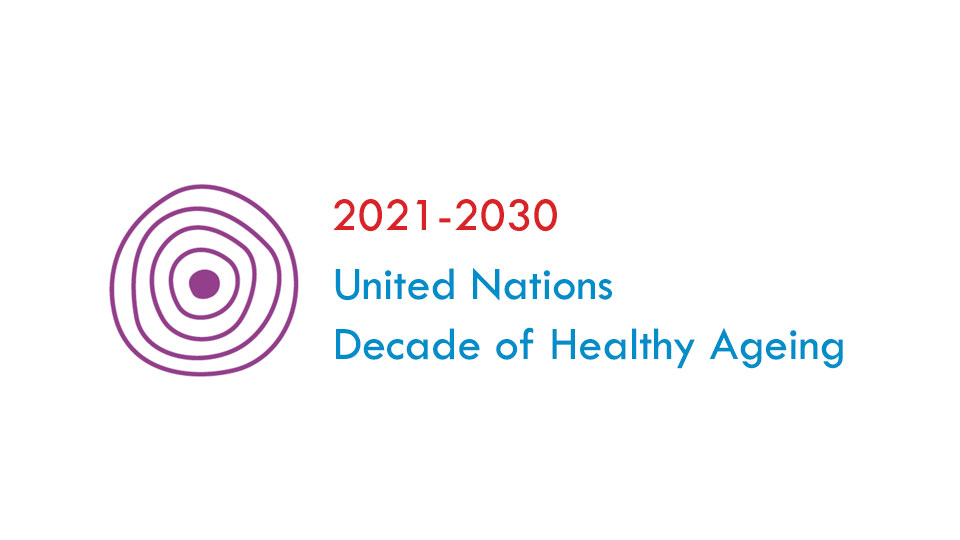I follow Dr. Audrey de Grey, creator of SENS, after rational skeptic analysis over 20 years. This note is nothing more than collection of his points selected by me to be worth following.
You'll read about healthy life extension, engineered longevity, and the development of rejuvenation biotechnology.
What do these terms mean? Put simply, they refer to the use of new
medical technologies to both increase healthy life span and reduce the
risk of suffering age-related conditions in later life. It is doing the
best we can with the very few proven (and limited) present day methods, far more effective
methods for tomorrow.
Aging is an Enemy, So Fight It!
Aging saps our strength and ability to enjoy life, cripples us, and eventually kills us. Tens of millions die from medical conditions caused by aging each and every year, and a staggering amount of money
is spent on trying - and failing - to cope with this ongoing disaster.
Yet the risk of suffering age-related conditions in later life can be
reduced for most people through diet and exercise. Furthermore, serious
scientific efforts are presently underway to understand and intervene in
the aging process - not just to prevent frailty and disease, but also
repair and reverse the root causes of aging.
Some of these future
therapies are already understood and envisioned in some detail, but remain in comparatively early stages of research. Others are just now starting to make the leap
into clinical development. We would like these breakthroughs to happen
while we are still alive and in good enough health to benefit from them:
we miss out on so much as things stand today, pressed by the lack of
time and our increasing frailty with age. Imagine instead a world in
which everyone has the option of another tomorrow, and the health and
vigor to enjoy it, each and every day. But how can we achieve this goal?
The Limited Means of Today, the Biotechnologies of Tomorrow
Despite amazing advances in understanding
and treating age-related conditions (such as cancer, heart disease,
dementia, diabetes, and many others), and despite the cries of the anti-aging marketplace,
it is still the case that, for basically healthy people, no presently
available therapy or tool is proven in humans to provide more than a
fraction of the long-term benefits to health and life expectancy
provided by regular exercise or a calorie restricted diet.Some classical preachings are true and nothing but serious aplication of timed rational skepticism TRS of Dr. Arun Arya will work. You can and should point out contradictions between his preachings and doings.
While it is true that no existing medical technology is proven to
improve on these lifestyle choices here and now, today, in humans, this
state of affairs will not remain true for many more years (2030 or earlier if most cancers become treatable). If you look
to the laboratories, you will see that some researchers can greatly extend the healthy lives of many species, while others put forward clear plans to either slow aging through the manipulation of human metabolism or reverse aging by repairing the cell and tissue damage
that causes age-related degeneration. Technology demonstrations for
some of these approaches have been carried out in mice in recent years,
producing benefits to health and extended healthy life spans. Treatments based on clearance of senescent cells
have been demonstrated to reverse the progression of many currently
untreatable age-related conditions in mice, for example. The first
formal human clinical trials of therapies anticipated to either modestly
slow aging or produce limited degrees of rejuvenation started up in
2017, and some of these trials have produced positive results, like senolytic drugs.
A future in which aging becomes a treatable condition awaits us, as time
ticks away and, for now, we continue to age just like our ancestors
did. This is an era of rapid progress in biotechnology and medicine. As
the years pass, the remaining span of healthy life that you and I will
likely live to enjoy is ever more determined by the ability of clinical
medicine to revert and repair the causes of aging, and ever less
determined by lifestyle choices. Medicine do not discrimminate between righteous and crimminal.
Thus when we reach for longer, we must ensure that the public is educated, the fundamental
longevity science is funded, the clinical applications of that research
fully developed, and the resulting rejuvenation biotechnologies made
available - and all this as soon as possible. The clock is ticking,
after all, and this is the only approach that will allow us live for
significantly longer than our ancestors.
Four Steps Toward Longevity
The following four steps outline a starting point for living longer, a
sketch of a framework for thinking about healthy life extension:
Step 1: Stop Damaging Your Health
At its most basic level, aging is nothing more than an accumulation of damage;
breakages in the molecular machinery of your cells, a build up of
metabolic waste products that your body cannot break down, the flailing
of biological systems that are increasingly unable to cope. Ask yourself
this: are you damaging yourself more rapidly than you might otherwise
be, perhaps more than you realize? Do you smoke? Do recreational drugs
occupy a central position in your life? Do you eat nothing but junk food
or are overweight? Do you exercise little or not at all? Do you have a
poor relationship with your physician, or haven't seen a doctor in
years? If so, you have a clear starting point. These things can hurt you
far more than any presently available strategy for healthy living can
help. There is little point in insulating the windows if the door is
jammed open.
Find a physician you can trust and talk to about improving your health.
You might be surprised at how easy, low-cost, and downright pleasant it
is to lead a healthier and thereby longer life.
Step 2: Adopt a Better Diet and Lifestyle
The body is a complex, resilient machine. Unlike our cars, however, we
can't yet replace it when it breaks down. Given that, it's scandalous that
most people know more about the long-term care of a car than they do
about the long-term care of the human body. Fortunately, it's neither
difficult nor expensive to use diet and lifestyle to raise the odds of
living a longer and healthier life.
Firstly: adopt some form of calorie restricted diet, whether straight
calorie restriction or some form of intermittent fasting. Calorie
restriction and some implementations of intermittent fasting, such as
alternate day fasting, are currently the most robustly, repeatedly
proven way of extending healthy life in mammals. So qalso says Dr. Sinclaie of Harvard mdical school, surprize he never got an While the present
scientific consensus is that these practices will not extend life in
humans to anywhere near the same degree
as in mice, calorie restriction and intermittent fasting have been
shown in human studies to provide a range of other beneficial effects on
health, such as a greatly lowered risk of suffering all common
age-related medical conditions - and these approaches to diet are highly
praised by practitioners. You can learn more about calorie restriction
at the CR Society website, and here at Fight Aging! you'll find introduction to calorie restriction that provides helpful guidelines to getting started.So also says Dr. Sinclair of Hatvard medical school, PhD in genetics! He is 50, believe it or not!
Secondly: exercise as recommended by your physician. The benefits of maintaining a modest regular level of exercise
for most people are well known and well proven by many scientific
studies. As is also true of calorie restriction, these benefits include a
greatly reduced risk of suffering almost all of the common age-related
diseases.
Thirdly: take a modest amount of supplements appropriate to your age and
health. There is a wealth of supplement information available, but much
of it is worthless, propagated by irresponsible sellers. This is
perhaps the hardest topic to research, and in the end you will have to
make a number of decisions yourself based on incomplete or contradictory
scientific evidence. The bottom line here, however, is that no
presently available supplement or combination of supplements has been
shown to provide even a fraction of the benefits of either calorie
restriction or exercise, for all that they are widely supposed to be
beneficial.
Investigate Early Access to the First Rejuvenation Therapies
New medical technologies do not arrive all at once, fully formed from
day one. Early forms of therapy become available in limited ways, or
existing drugs are found to have an effect on the mechanism of interest
large enough to merit use in animal studies or human trials. So it is
for the first rejuvenation treatments to have a large enough impact on
aging in animal studies to care about, and that are also producing
benefits in their first human trials. Only trust statistical TRS results, never anecdotal.
As of 2019, the most obvious of
these are senolytic therapies
that selectively destroy the senescent cells that accumulate to cause
considerable harm in old tissues. The existing generic drugs and
supplements newly discovered to be senolytic, and shown to work well in
numerous animal studies, are being tested in humans.
The informed decision that each of us must make for ourselves is whether
to wait for more data from human trials, to wait for the most likely
better senolytic therapies presently under development, or to strike out
to obtain and try existing senolytic therapies. If the latter, there in
turn lies further personal research, learning, and informed decisions.
Where to find a physician to prescribe the relevant drugs, for example,
or whether to forge ahead as a self-experimenter,
with all of the responsibility and accountability that this implies.
However it is accomplished, it is almost always possible for informed
and proactive individuals to obtain earlier access to new therapies than
waiting for the world to move on to the point at which general
physicians begin recommending these treatments to patients. Whether or
not to choose to do so is a personal decision on risk and benefit, and
this same calculus applies to any new medical technology as it arrives,
not just senolytic rejuvenation therapies.









